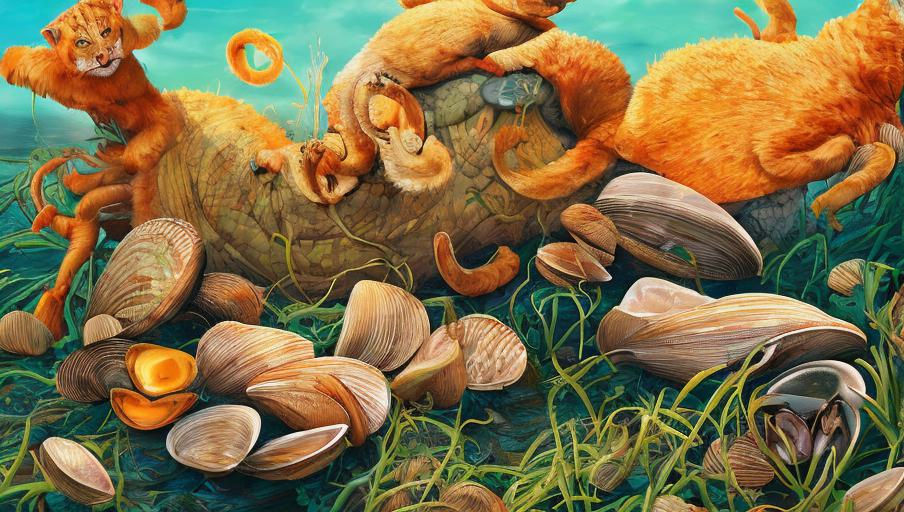Beyond the Beach: Clams in Different Marine Environments

Introduction
Clams are a type of bivalve mollusk found in many different marine environments around the world. While most people are familiar with the edible species found in coastal areas, clams also inhabit a variety of other habitats, such as deep sea trenches, mud flats, and coral reefs. This article will explore the different environments in which clams are found, as well as their behavior, adaptations, and importance to the ecosystem.
Deep Sea Trenches
The deepest parts of the ocean are home to a variety of species, including giant clams. These deep sea trenches contain hydrothermal vents and chemosynthetic communities, which provide a unique habitat for clams. In order to survive in such extreme conditions, clams have adapted to withstand intense pressure and a lack of light. They also have unique feeding methods, such as filter feeding, which allows them to feed on plankton and other organic matter.
Mud Flats
Mud flats are shallow coastal areas that are rich in mud and sediment. They are home to a variety of species, including clams. Clams found in mud flats are typically larger than those found in other habitats, and they are well adapted to living in an environment with little oxygen and light. These clams feed on organic material in the mud, such as algae and small animals. They also use their muscular foot to burrow into the mud, which helps them to survive in such an environment.
Coral Reefs
Coral reefs are one of the most diverse ecosystems in the world, and they are home to a variety of species, including clams. Clams found in coral reefs are usually smaller than those found in other habitats, and they are well adapted to living in an environment with plenty of oxygen and light. These clams feed on a variety of organisms, including plankton, algae, and small fish. They also use their foot to attach themselves to the coral and other surfaces.
Behavior and Adaptations
Clams are filter feeders, which means that they use their gills to filter food particles out of the water. They are also able to bury themselves in the sand or mud for protection. Additionally, many species of clams have specialized adaptations for living in different environments, such as a thicker shell for deep sea trenches, or a more streamlined shape for coral reefs.
Importance to the Ecosystem
Clams play an important role in the marine ecosystem. They help to cycle nutrients and oxygen, which is essential for the health of the environment. They also provide food to a variety of other species, including fish and sea birds. Additionally, clams are a keystone species, meaning that they are vital to the health of the ecosystem and the species that rely on them for food.
Conclusion
Clams are an important species found in a variety of marine environments around the world. They are well adapted to their environment, and they play an essential role in the health of the marine ecosystem. Whether they are found in deep sea trenches, mud flats, or coral reefs, clams are an important species that we should strive to protect.





